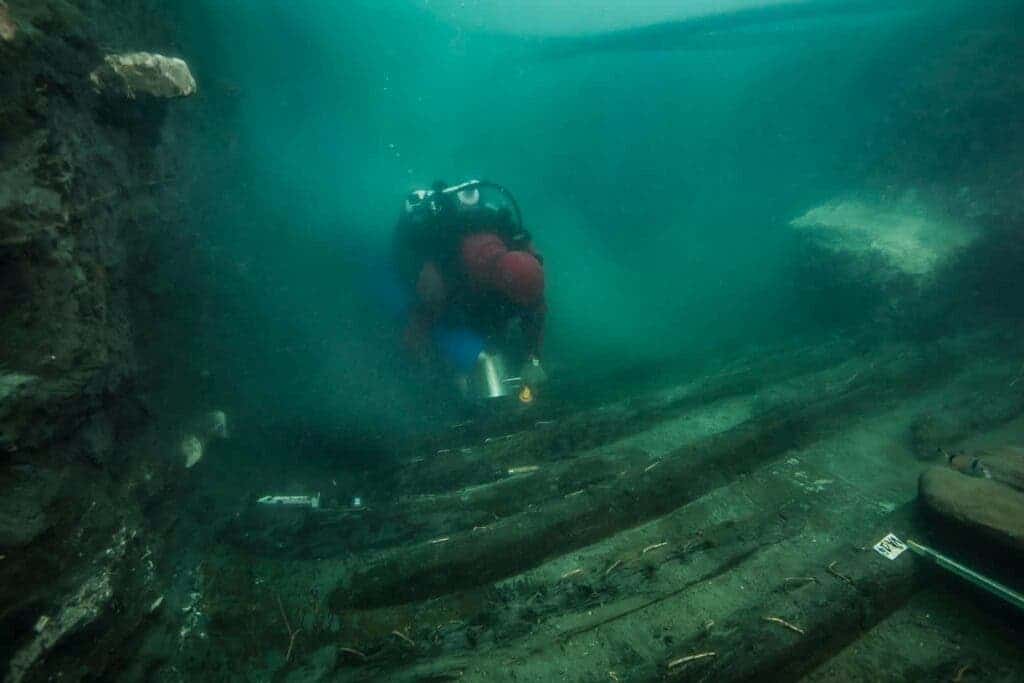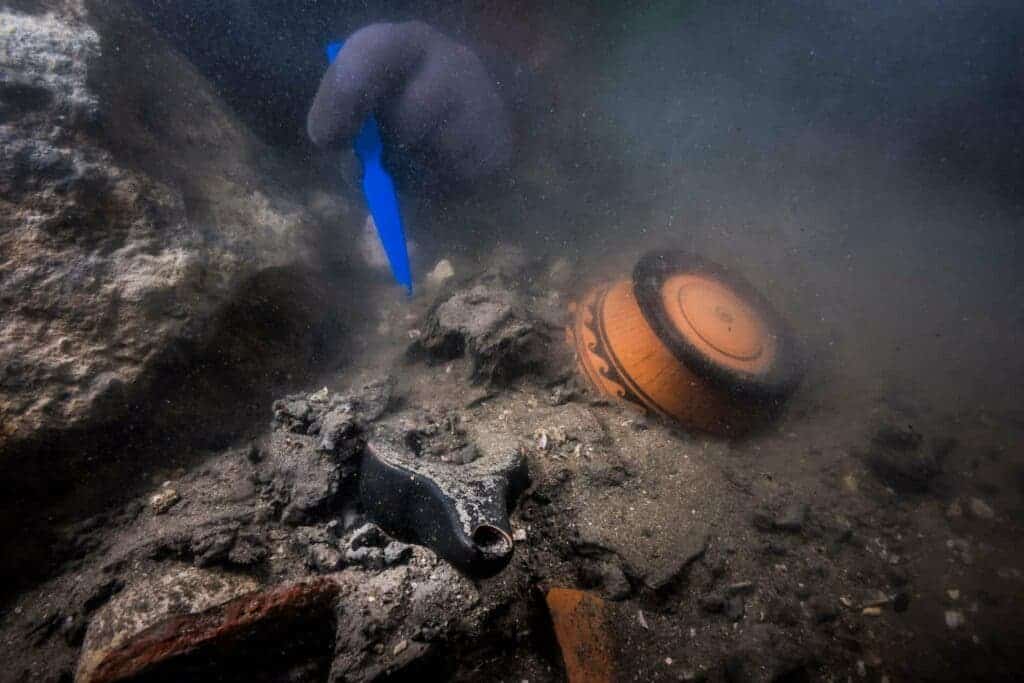A group of archaeologists working in the waters off Alexandria found a shipwreck filled with Greek treasures dating back to the Ptolemaic era of Egypt (332-330 BC). Located in the lost city of Heracleion, the shipwreck is from a time when the Greek civilization had a big influence in Egypt in the last days of the pharaohs.

The finding was made by the European Institute for Underwater Archaeology (IEASM), led by researcher Franck Goddio, who had previously discovered Heracleion over two decades ago. Goddio said the ship sank after being hit by big blocks from the temple of Amun (a major Egyptian deity), which was destroyed during a cataclysmic event in the second century BC.
The shipwreck is located under about five meters (15 feet) of hard clay, mixed with the remains of the Amum temple. The fallen blocks from the temple protected the ship by trapping it at the bottom of a deep canal, which was back then packed with clay and the debris of the sanctuary. The team found it by using a cutting-edge sonar prototype.
In a statement, Goddio said the findings of these kinds of vessels from the Ptomelaic era are extremely rare, with the only example to date being the Punic Marsala Ship from 235 BC found in Italy in 1971. While the hull of the vessel was built based on a classical tradition, it also has features of ancient Egyptian construction, Goddio said.
“It was a rowing ship that was also furnished with a large sail, as shown by a mast step. This long boat was flat-bottomed and had a flat keel, which was quite advantageous for navigation on the Nile and in the Delta,” he said. “Some typical ancient Egyptian shipbuilding features, together with the evidence for a reuse of wood, indicate that it was built in Egypt.”

As well as finding the shipwreck, the researchers found the remains of a big Greek funerary area covered with funerary offerings that go back to the first years of the 4th century. Photos show beautiful and well-preserved Greek vases the underwater archaeologist team uncovered, which illustrate the presence of Green merchants who lived in Heracleion.
A trade hub for Greek ships
Heracleion, also known by its Egyptian name, Thonis, was the obligatory port of entry to Egypt for all ships coming from the Greek world. It was located 32 kilometers (20 miles) northeast of Alexandria on the Mediterranean Sea. The city also had religious importance because of the temple of Amun, which had a big role in rites linked with dynasty continuity.
Researchers believe Heracleion-Thonis sunk into the Mediterranean in the 8th century AD. Its remains are now located under Abu Qir Bay, 2.5 kilometers off the coast and under just ten meters (30 feet) of water. It was discovered in 2000 by Goddio and a team of researchers at the IEASM. Prior to that, no trace of the city had been found, they explained.
The researchers spent years mapping and excavating the area before making the actual discovery. Their findings show the city extended all around the temple of Amun, with a network of canals in and around the city, giving it a lake-dwelling appearance. Research continues since the initial discovery, as only 5% of the city has yet been discovered.
This article has been edited to mention that Heracleion was an Egyptian, not a Greek city.









